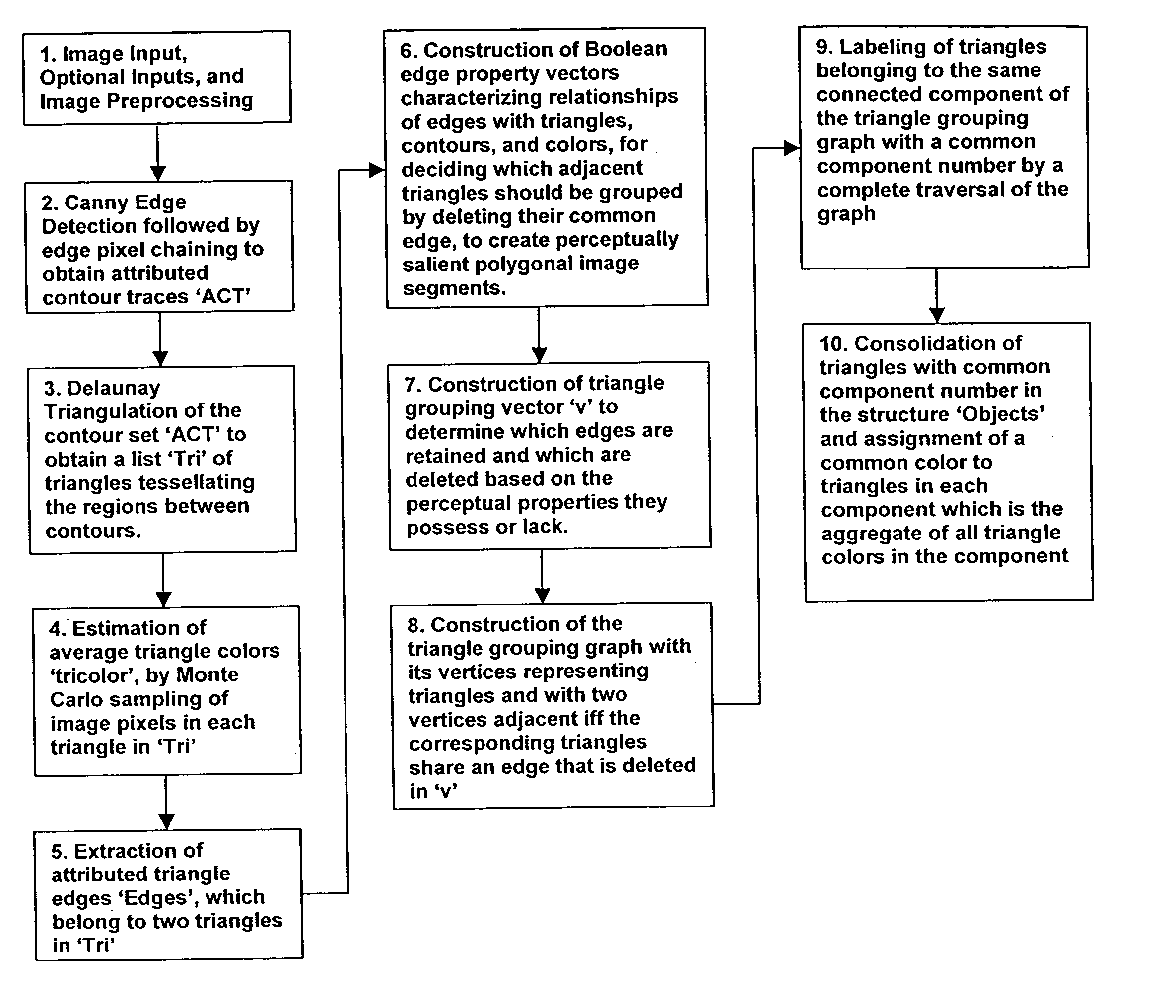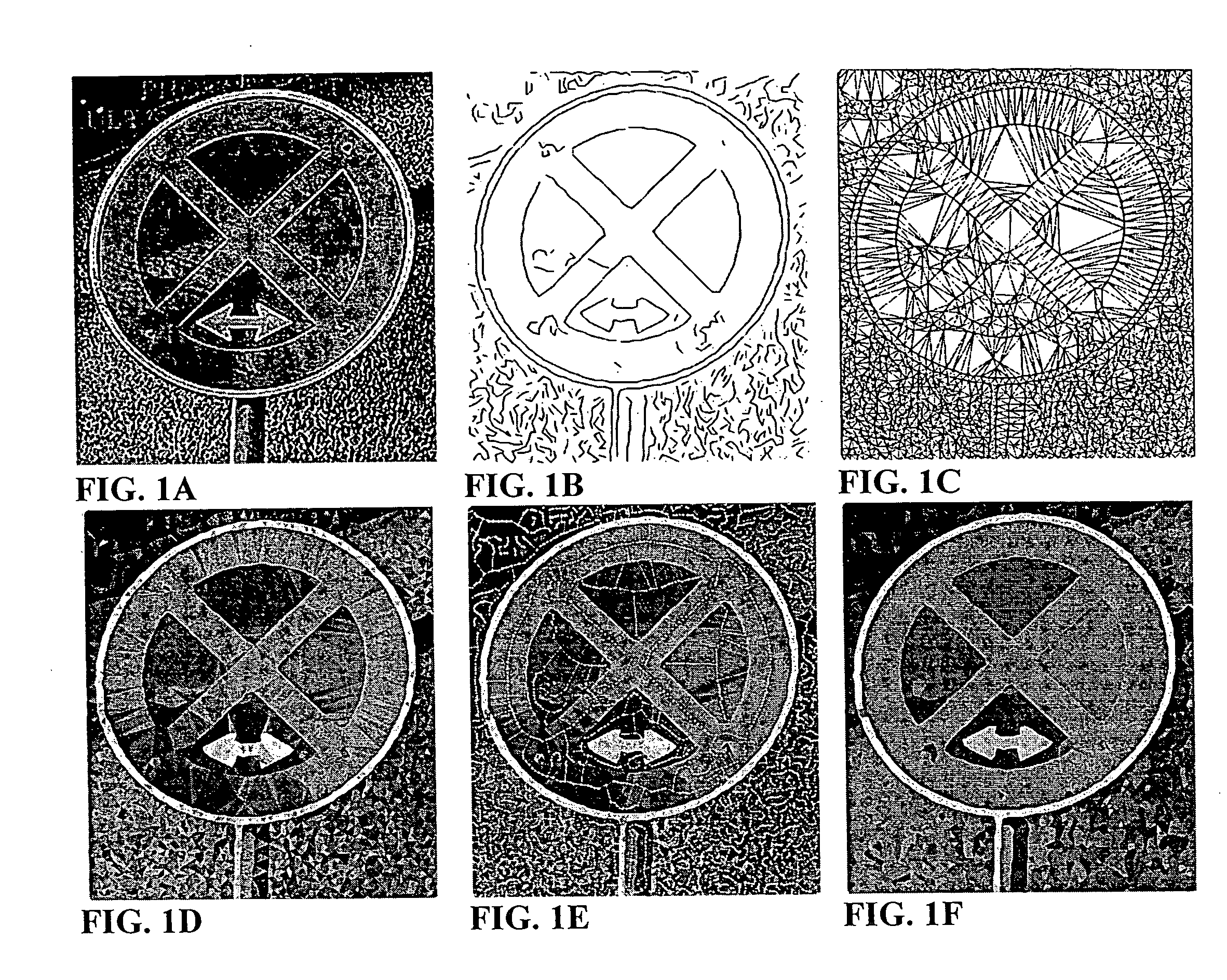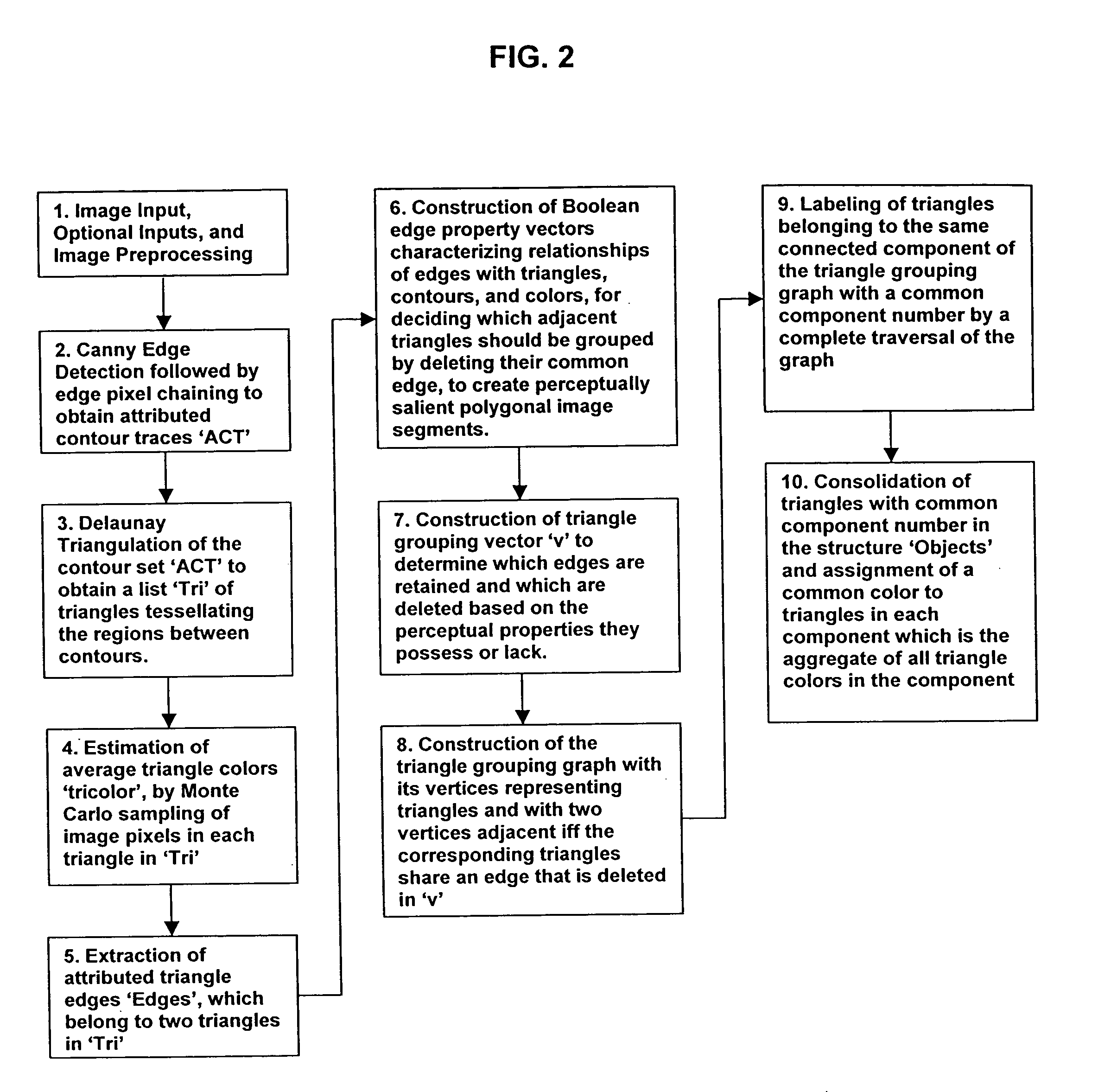Vectorized image segmentation via trixel agglomeration
a segmentation and vector technology, applied in the field of image processing and understanding, can solve the problems of no universally applicable method to date, no relationship, and spherical noise due to the enhancement of neighboring pixel differences
- Summary
- Abstract
- Description
- Claims
- Application Information
AI Technical Summary
Problems solved by technology
Method used
Image
Examples
Embodiment Construction
[0017] Existing segmentation methods typically generate a pixelated image, only using fewer colors than the original. Thus, extracting structures from the segmented image is generally not addressed. In accordance with the method of the present invention, a digitized (i.e., pixelated) image is transformed into a vectorized image, wherein the objects of interest are readily obtained at a higher level of representation as attributed polygons. Vectorizing an image involves the representation of an image in terms of geometric primitives, such as points, straight lines, polygons, and arcs, and their relative positional arrangements, along with attributes such as spectral values, intensity, and the like. In contrast, a digitized image uses pixels arranged in a grid as primitives to represent the image.
[0018] Vectorization helps to explicitly delineate complex structures and allow the direct scaling of images without loss or change of image quality. The selective processing and manipulatio...
PUM
 Login to View More
Login to View More Abstract
Description
Claims
Application Information
 Login to View More
Login to View More - R&D
- Intellectual Property
- Life Sciences
- Materials
- Tech Scout
- Unparalleled Data Quality
- Higher Quality Content
- 60% Fewer Hallucinations
Browse by: Latest US Patents, China's latest patents, Technical Efficacy Thesaurus, Application Domain, Technology Topic, Popular Technical Reports.
© 2025 PatSnap. All rights reserved.Legal|Privacy policy|Modern Slavery Act Transparency Statement|Sitemap|About US| Contact US: help@patsnap.com



